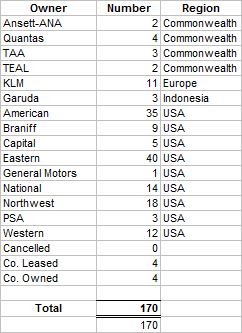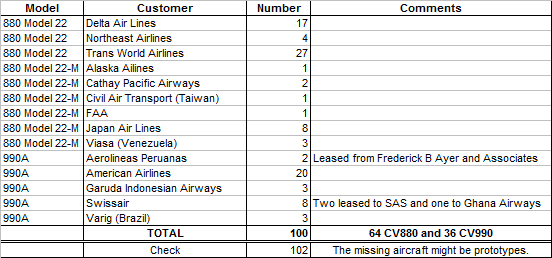The case of France "airliner industrial base".
So, Caravelle, then what ? Concorde ? Mercure ? Airbus ? it is a rather tortured story.
Part 1
SNCA: Société Nationale de Construction d'Avions. In english: public company to build aircraft.
SNCAs were created in 1936, more than half a dozen of them according to geography (facepalm).
Short story: imagine France aircraft industry, 1933 - 20 private companies with plants scattered across the entire country - as a giant pizza, fragmented.
The Front Populaire first savaged the private companies, then sized all their plants - and finally glued them back together, Frankenstein style, into big conglomerates. This according to geography: like a giant pizza melted and then re-sliced into regular parts: north, south, center, west, east. Southern France being very large, it got split between Bordeaux, Toulouse and Cannes. So: North, Center, South-west, South-center, South-east.
All in the name and tortured accronyms
-SNCA-N
-SNCA-C
-SNCA-SO
-SNCA-Midi (center south !)
-SNCA-E
If the name sounds familiar (SNCF !) it is because it was the same people (Front Populaire) doing the same thing (NATIONALIZATION) at the same moment (SNCF was created in 1937) except for railways rather than aviation.
Took until 1959 to shrink SNCAs number to two: Nord Aviation and Sud Aviation (hello, Caravelle: - North & South aviation).
Yet Nord & Sud didn't merged until 1970 creating SNIAS, the "AS" standing for AeroSpatiale... and soon it became the company official name.
So, bottom line: 1936 - 1959 - 1970, that's 34 years to fully integrate France state owned aircraft companies into a single big entity.
And by 1970 they had been thoroughly kicked out of combat aircraft by Dassault - but they also had swept out almost everything else aerospace in exchange. Hence: they had de facto became France airliner industrial base. Except for bizjet, where Dassault had scored gold with their Falcons.
In a sense some kind of statu quo / truce existed, two actually
- Dassault: don't mess with us on combat aircraft and bizjets
- SNCAs: ok, but don't mess with us on helicopters, rockets, missiles, and civilian aircraft larger than a Falcon 20.
This "truce" was soon to implode, with disastrous consequences. Dassault in passing was probably glad to be kicked out of Concorde early on, considering the commercial disaster in the making - they were smart enough to see it coming, unlike the SNCAs and Government...
Part 2
So, see above. From the 1950's Dassault combat aircraft thoroughly flattened the SNCA public companies. Besides Vautour and the peculiar case of Breguet's Jaguar, they wouldn't build anything else than prototypes.
As such, the SNCAs turned to "everything aerospace where Dassault wasn't": airliners, rockets, missiles, helicopters.
In the 1950's this happened by default: Caravelle was a major success for a SNCA.
In the 1960's, De Gaulle made it a very official policy - SNCA atempts at combat aircraft were nipped in the bud, but Dassault was also encouraged not competing with them.
And so by 1966 the aforementioned "truce" existed, at least on paper.
And then a string of stupid decisions happened in 1963-68 that derailed the above rule for a decade and led to a string of commercial disasters.
- Concorde for a start, fully pumped SNCA airliner industrial base for a decade... and for the worst possible result: a commercial disaster.
- Dassault Falcon versus SNCA Corvette: should not have happened. Falcon won, Corvette was a financial disaster.
- Dassault Mercure vs Airbus: should not have happened. Partly-SNCA Airbus won, Mercure lost and was a commercial disaster
- Jaguar was also an oddity, although Breguet was private like Dassault (not a SNCA)... and Dassault ate them by the late 1960's and then ruined the Jaguar foreign exports for his F1 instead.
Bottom line: the above is the reason why there was such a gap between Caravelle and Mercure... the later a Dassault, done at a time when the SNCA airliner industrial base was busy with Concorde failure and the A300 miseries.
By 1975 France had four civilian jet program commercial disasters in the making
- Corvette bizjet
- Concorde SST
- Mercure narrow body
- A300 (only that one survived to better days)
It was a remarquable shitstorm born of naive enthusiasm: before - "Mai-68 popular riots" & "first oil shock" ... Concorde took both shocks head on.
Meanwhile the usually ultra-efficient and cautious Dassault for once turned full bonehead with the Mercure. Not only did they bit more than they could chew.
Dassault never was a big company, and it is deliberate actually: don't grow too big otherwise hedge funds or... the government (!) will buy your soul. And still, that smallish company - even bolstered with all the Mirage and Falcon sales steady cashflow - tried building a 100-150 seat airliner.Which was and still is actually the graveyard of countless companies from Fokker to Avro to Embraer to Bombardier C-series to Dornier... and many others.
Well, it almost become Dassault graveyard too.
That, and second stupid mistake: it was a declaration of thermonuclear war to the SNCAs. Funny to think they kind of counter-attacked with the Corvette against the Falcons - and both projects ended crashing down in flames: to the French taxpayer great dismay.
Third stupid mistake: range was waaaaaaay too short. Half that of a 737 or 727 or DC-9. That was a very dumbarse and ultimately lethal mistake. Once again, pretty unusual from Dassault: then again they were new on the airliner difficult business.
And thus by 1976 the Mercure ended as a colossal, crippling commercial failure: 11 build, 10 rammed into Air Inter... rear end by the French government, at great taxpayer expense. Dassault had to lobby like crazy. Nice, Concorde was rammed the exact same way at the exact same moment into Air France same... rear end, by the same French Government. My parents freshly married in 1975, probably paid for that with their taxes.
It almost sunk Dassault, the silly thing - they barely saved their sorry ass by 1981 when Mitterrand left almost nationalized them. They resisted and are still there, but it was the closest from bankrupcy Tonton Marcel (uncle Marcel: Dassault) company ever came since their rebirth in 1947.
A pity, because besides the three stupid mistakes the plane was technically excellent. There at least Dassault hadn't lost their mind, intelligence, brains - and touch. Mercure had a HUD like a combat aircraft (pilots loved it !), it was as reliable as a Swiss clock - and not a single one ever crashed - well, with only 10 maintained by a public company, risk was close from zero - but still !


